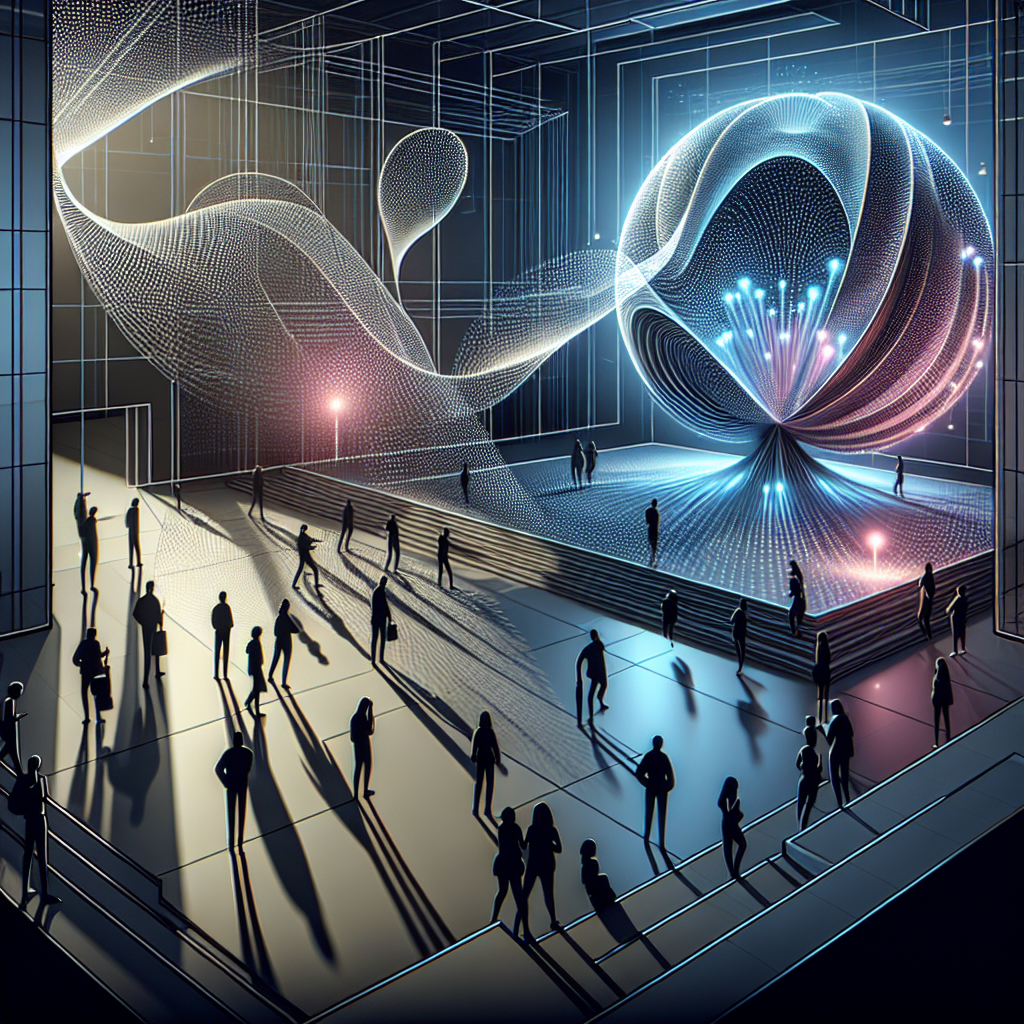Generative AI, also known as artificial intelligence, has revolutionized the way we create art. By using algorithms to generate unique and dynamic content, artists can explore new possibilities and push the boundaries of traditional art forms. One exciting application of generative AI is in the creation of interactive art installations. These installations engage viewers in a way that traditional static artworks cannot, creating a truly immersive and participatory experience. In this article, we will explore how generative AI can be used to create interactive art installations, discuss some examples of successful projects, and address common questions about this emerging field.
Generative AI in art involves using algorithms to generate images, sounds, or other forms of content. These algorithms are trained on large datasets of existing art, allowing them to learn patterns and styles that can be used to create new works. By tweaking parameters and inputs, artists can explore a wide range of possibilities and create truly unique and innovative pieces.
One of the key advantages of using generative AI in art is its ability to create dynamic and interactive content. Traditional art forms, such as painting or sculpture, are static and unchanging. With generative AI, artists can create artworks that respond to the viewer, changing and evolving in real-time. This interactive element adds a new dimension to the art experience, engaging viewers in a way that is both exciting and immersive.
One example of a successful interactive art installation using generative AI is “The Obliteration Room” by artist Yayoi Kusama. In this installation, visitors are invited to cover a white room with colorful dot stickers, gradually transforming the space into a vibrant and ever-changing artwork. The interactive nature of the installation allows viewers to become active participants in the creation of the artwork, blurring the lines between artist and audience.
Another example is “Refik Anadol’s Machine Hallucination,” a project that uses generative AI to create immersive digital artworks. In this installation, AI algorithms analyze and reinterpret the architecture of a building, generating dynamic visualizations that respond to the movement of visitors. By using AI to create these digital landscapes, Anadol creates a truly immersive and interactive experience that challenges traditional notions of space and perception.
Using generative AI to create interactive art installations opens up a world of possibilities for artists. By harnessing the power of algorithms, artists can create artworks that are constantly evolving, responding to the viewer in real-time. This dynamic and interactive approach to art challenges traditional notions of authorship and invites viewers to become active participants in the creation of the artwork.
As generative AI becomes more accessible and widely used in the art world, there are a number of common questions that arise. In this FAQ section, we will address some of the most frequently asked questions about using generative AI to create interactive art installations.
1. How does generative AI work in art?
Generative AI works by using algorithms to generate content based on patterns and styles learned from existing art. These algorithms can be trained on large datasets of images, sounds, or other forms of content, allowing them to create new works that mimic the style of the training data. By tweaking parameters and inputs, artists can explore a wide range of possibilities and create truly unique and innovative pieces.
2. What are the advantages of using generative AI in art?
One of the key advantages of using generative AI in art is its ability to create dynamic and interactive content. Traditional art forms, such as painting or sculpture, are static and unchanging. With generative AI, artists can create artworks that respond to the viewer, changing and evolving in real-time. This interactive element adds a new dimension to the art experience, engaging viewers in a way that is both exciting and immersive.
3. Are there any limitations to using generative AI in art?
While generative AI offers many advantages, there are also some limitations to consider. One challenge is the potential for bias in the training data used to train the algorithms. If the training data is not diverse or representative, the algorithms may produce artworks that reflect these biases. Additionally, generative AI can be computationally intensive and require specialized hardware and software to run effectively.
4. How can artists get started with generative AI in art?
There are a number of resources available for artists interested in exploring generative AI in their work. Online courses and tutorials can provide a good introduction to the basics of generative AI, while more advanced artists may choose to work with specialized software and tools. Collaboration with data scientists and AI experts can also be a valuable way to explore the possibilities of generative AI in art.
5. What are some examples of successful interactive art installations using generative AI?
There are many examples of successful interactive art installations using generative AI. One notable project is “The Obliteration Room” by Yayoi Kusama, where visitors are invited to cover a white room with colorful dot stickers, transforming the space into a vibrant and ever-changing artwork. Another example is “Machine Hallucination” by Refik Anadol, which uses AI algorithms to create immersive digital artworks that respond to the movement of visitors.
In conclusion, generative AI offers exciting possibilities for artists looking to create interactive art installations. By using algorithms to generate dynamic and responsive content, artists can engage viewers in new and innovative ways. As this technology continues to evolve and become more accessible, we can expect to see even more groundbreaking projects that push the boundaries of traditional art forms. If you are an artist interested in exploring the possibilities of generative AI in your work, now is the time to start experimenting and pushing the boundaries of what is possible in art.

